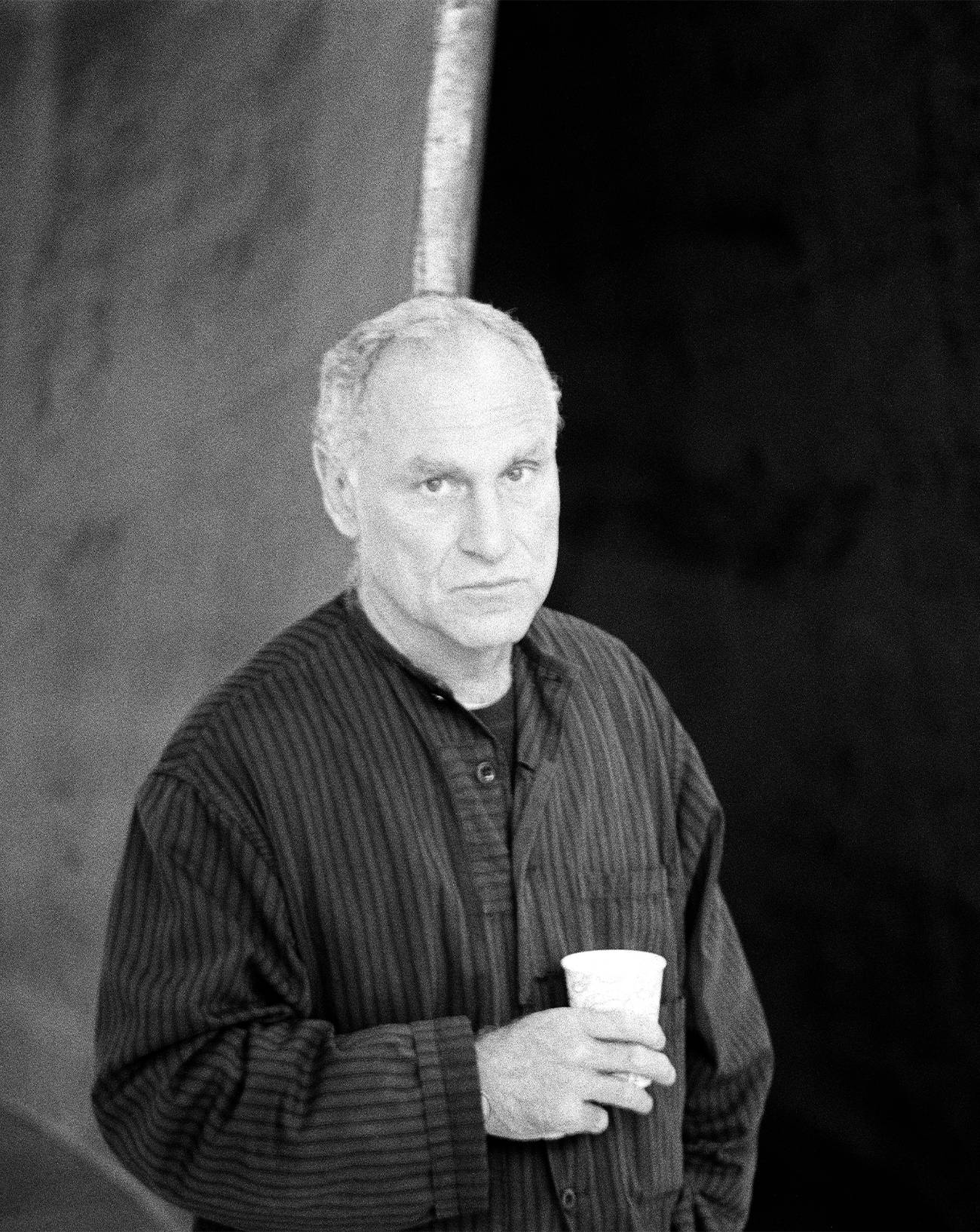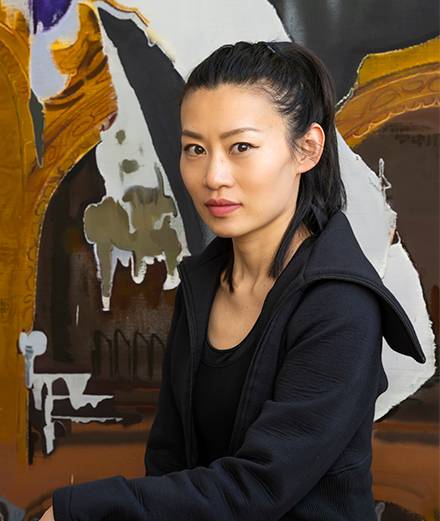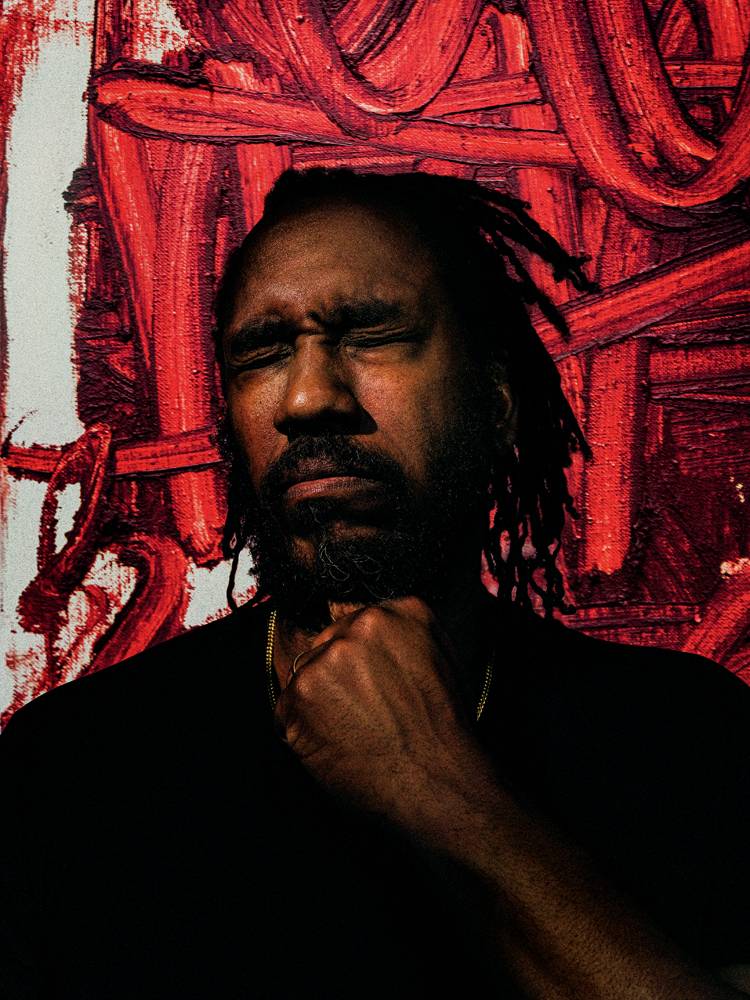

Numéro: How much of your kitschiest work is irony?
Jeff Koons: The term kitsch makes people jump to conclusions. Its negative connotations are used by those who use art as a form of segregation. I don’t believe in kitsch because I don’t believe in exclusion. Art’s vocation is to encourage an acceptance that is both universal and transcendental, beginning by accepting oneself.
When your Cracked Egg (Blue) was selling in London last year, cheques below $3.5 million weren’t accepted. Why?
If the artist’s value goes up, it’s also to make sure that the demand never surpasses the supply. The selection happens naturally: the piece will go to the person who pays the most and the collectors aren’t upset if they don’t get it.
Is exposing one’s own work at home bad taste?
A sufferance more like! I’d never inflict that on my family or myself. At my home my collection of 20th century art – Dalí, Magritte, Man Ray and Lichtenstein – hangs on the walls along with a few contemporary works by Elizabeth Peyton and Thomas Struth. My wife Justine is also an artist and we’ve got several of her paintings and photos up.
Has Michael Jackson ever tried to acquire the life-size porcelain effigy?
Jackson implied that he was keen on seeing the piece develop in my New York studio. I tried to explain that the sculpture was being made by artisans in Europe but he made out he didn’t hear a word. Every time he made an appointment to come by, he’d always stand me up. When I went to Neverland to visit him he vanished. Silence. I didn’t bother anymore.
Did he file a complaint against you for violating his image?
There was once a time when Picasso, Warhol and Duchamp borrowed from others with impunity. In the 1980s American artists were treated like greedy social climbers who only thought about their bank accounts. Postcard photographers deployed armies of lawyers to file suit against them for copyright violation. You always have to look out for yourself, even though I’m still convinced that artistic appropriation is honest.
And you haven’t been greedy and social climbing yourself?
The money I earn provides my family with security, sure, but it has never been my main motivation. Art is above all a visceral experience and it comes from deep inside me like a chemical reaction that helps me transcend my limits.


After Michael Jackson and Bubbles what pop icons inspire you today?
It’s not about icons anymore. Pamela Anderson’s beauty and improper innocence has intrigued me for a long time. But for the last two years my work has moved away from popular culture and more towards the history of art.
How did becoming a father affect your artistic approach?
I have five children today. But it was the birth of my eldest daughter, Shannon that really opened my eyes. It was 32 years ago and I was still a student. I had to show I was up to it.
Why did you wait until she was 19 before meeting her?
My girlfriend at the time was also a student and wasn’t ready to become a mother so Shannon was adopted. However, it was very important to me that Shannon could renew contact with me as soon as she felt the need.
How could you be so sure that she’d find you?
By being successful.
How did Ilona Staller, alias La Cicciolina, flee to Rome with your son Ludwig?
We were living in New York and just about to finalise the divorce proceedings when she took him. The European court demanded his extradition back to the USA, but Italian justice never carried out the verdict. My son and I have suffered a terrible injustice and ever since his mother hasn’t stopped turning him against me. She’s set up so many obstacles and traps in order to distance me from my child, that now it’s impossible for us to be in contact.
Does art require explanation?
Art should take you by the throat and shake your guts up. All these interpretations, clarifications and other details of purpose that we require from artists today have always struck me as completely superfluous. Art exists exclusively in the eye of the beholder, that’s the only valid interpretation.


And if I asked you to make a bust portrait of me in the style of your Bourgeois Bust?
I never work on a made-to-order basis. If someone asks me, “Jeff, what work of art do you reckon could furnish this space?” I’d happily help out. But if I was asked, “Jeff I own a car factory, would you make a work of art out of one of my cars?” I’d say no. Because unless I suddenly developed a new passion for vehicles with four wheels, it would be impossible for me to work in those kind of conditions.
Ever since the Iraq war, French collectors have ignored your somewhat Uncle Sam-orientated work.
The political climate is obviously going to affect the market. As soon as America declared war against Iraq the art market sank. Private collectors and big institutions just stopped buying, in the US like elsewhere.
[Numéro archives]








